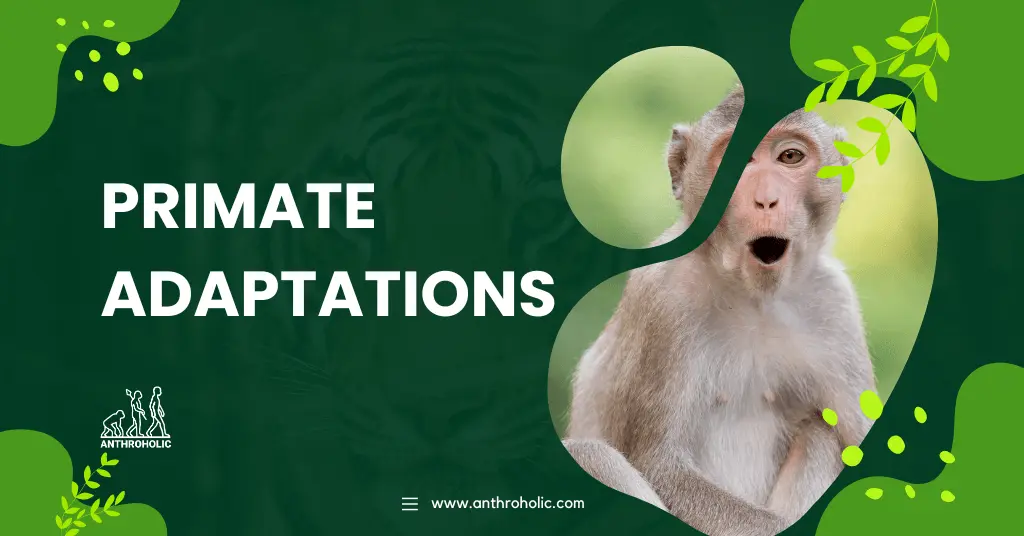AI Answer Evaluation Platform Live Now. Try Free Answer Evaluation Now
Primate Adaptations
The fascinating and diverse world of primates has captured the attention of anthropologists for many years. The adaptive strategies employed by different primate species, particularly in arboreal and terrestrial environments, are of critical interest. These differences, molded by evolution and environmental constraints, shed light on the intricate adaptive strategies that primate species employ in different habitats.

Arboreal Primate Adaptations
Arboreal primates are a diverse group that includes species such as gibbons and spider monkeys. Living mostly or entirely in trees, these primates have evolved unique physical and sensory adaptations that allow them to successfully navigate the challenges of arboreal life.
Morphological Adaptations
- Foremost among these physical adaptations are changes to limb structure.
- The long, flexible limbs of arboreal primates enable them to cover large distances between trees without descending to the ground, a mode of locomotion known as brachiation [1].
- The limbs are adapted to a variety of functions including swinging, climbing, and hanging, all necessary for a life in the trees.
- The limbs are often complemented by a prehensile tail, which acts as a “fifth hand” and provides additional support and balance when moving through the trees [2].
- The prehensile tail is a crucial adaptation that enables these primates to keep their hands free for feeding while maintaining a secure position in the treetops.
Sensory Adaptations
- Sensory adaptations are also vital for arboreal primates.
- Notably, these primates exhibit binocular vision, a visual adaptation that significantly enhances depth perception [3].
- Binocular vision involves the ability to focus both eyes simultaneously on the same object, producing a single, three-dimensional image.
- This adaptation is particularly crucial for arboreal primates because it allows them to accurately judge distances when moving between trees.
- With a highly three-dimensional environment, a miscalculated jump can lead to a fatal fall, making accurate depth perception an essential skill for survival.
- Moreover, binocular vision assists in locating and selecting food, as well as detecting and avoiding predators.
Terrestrial Primate Adaptation
Terrestrial primates, like baboons and gorillas, occupy a different ecological niche than their arboreal counterparts. Adapted to a life primarily on the ground, these primates have developed a unique set of physical and social strategies to thrive in this environment.
Morphological Adaptations
- Terrestrial primates typically have robust bodies and shorter limbs that are well-suited to their ground-based lifestyle [4].
- These physical attributes contribute to stability and balance, reducing the risk of injury when navigating rocky and uneven terrains.
- Additionally, shorter limbs are better equipped for endurance walking and running, crucial for both foraging and predator avoidance.
- Notably, these primates demonstrate quadrupedal locomotion, using all four limbs for movement.
- This mode of locomotion, prevalent in terrestrial primates, provides stability and speed over ground terrain.
Behavioral and Social Adaptations
- Beyond morphological adaptations, terrestrial primates also exhibit significant behavioral and social adaptations to mitigate the risks associated with ground living.
- Predation is a significant concern for terrestrial primates, and many species have evolved social systems to counter this threat.
- For instance, many terrestrial primates, such as baboons, live in large social groups that serve multiple purposes [5].
- Group living can offer increased protection from predators through collective vigilance, often termed the “many eyes” effect.
- In addition, larger groups can mount a more formidable defense against predators, deterring attacks and increasing individual survival chances.
Conclusion
In conclusion, the striking differences in adaptive strategies between arboreal and terrestrial primates underscore the complexity and diversity of primate evolution. Understanding these adaptations and their implications is critical for appreciating primates’ resilience and adaptive capacity in rapidly changing environments.
References
1. Cant, J. G. (1992). Positional behavior and body size of arboreal primates: a theoretical framework for field studies and an illustration of its application. American Journal of Physical Anthropology, 88(3), 273-283.
2. Fleagle, J. G. (2013). Primate Adaptation and Evolution. Academic Press.
3. Cartmill, M. (1974). Rethinking primate origins. Science, 184(4135), 436-443.
4. Napier, J. R. (1967). Evolutionary aspects of primate locomotion. American Journal of Physical Anthropology, 27(3), 333-342.
5. Jolly, C. J. (2007). Baboons, mandrills, and mangabeys: afro-papionin socioecology in a phylogenetic perspective. In Primates in Perspective (pp. 240-251). Oxford University Press. https://www.researchgate.net/publication/281101624_Baboons_mandrills_and_mangabeys_Afro-papionin_socioecology_in_a_phylogenetic_perspective




